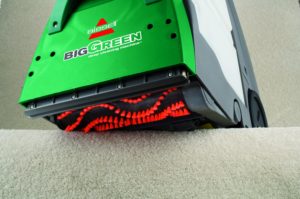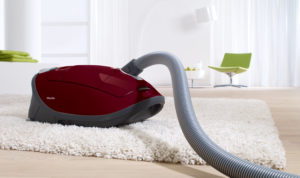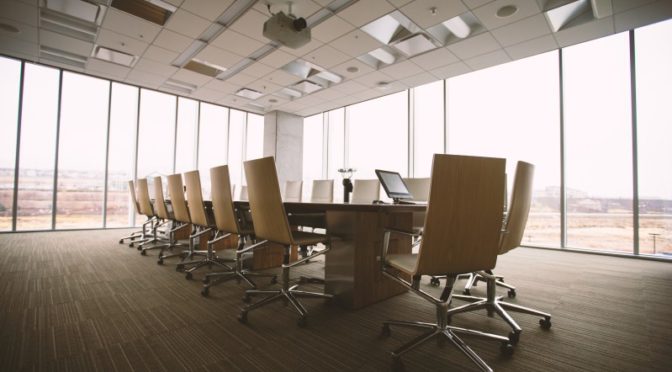
If you’re buying a carpet for your home, there’s lots of information available to guide you through the process, down to which carpets work best for each room in your house. However, the path can be a bit murkier when choosing a commercial carpet for your office or small business. Today we’ll look at which factors matter and which factors don’t when selecting commercial carpeting, including the importance of anti-static properties, staining and soiling protection, and overall durability.
For durability, choose your commercial carpet fibers and styles carefully
When working in business environments, durability is a must for long term success. Every minute you spend putting out fires is one you can’t spend growing your business or meeting client needs. When it comes to carpets, the way to ensure durability is to pay close attention to the fibers and styles you’re buying so they’re a good fit for your work environment.
For example, you’ll typically want to choose synthetic fibers and avoid natural ones for most businesses besides those that market environmental friendliness. Among synthetic fibers, you’ll get the most durability from nylon and triexta, followed by polyester, with olefin in last position. Choose short piles over high ones. Looped piles like berbers will last longer and look better than cut and loops, although you can also get longevity from cut piles like saxonies and friezes. Friezes, however, are long piled and casual, so they won’t work in more formal settings. This is a quick overview of the kinds of areas you’ll want to keep in mind when searching for commercial carpeting that lasts.
How important is anti-static protection in industrial and commercial carpeting?
The importance of anti-static protection in your office or business environment will depend entirely on the equipment you use and how sensitive it is to electrical disruption. Nearly every carpet on the market will come with some degree of static reduction, but if you manage an environment with highly sensitive or specialized equipment, such as that found in laboratories, healthcare, software and hardware development, or security and intelligence, you’re going to want higher levels of protection against stray static electricity.
Unfortunately, you can’t simply test carpets away from the environments in which you’ll install them to tell if they’ll provide suitable levels of anti-static protection. You’ll generally have to go by what you read in the specifications and carpet warranty. However, if you’re choosing a carpet specifically for its anti-static properties, you’re not going to be buying it blind, so take the time to do your research thoroughly.
Another way of protecting sensitive equipment in such settings from static discharges is to make sure humidity levels remain constant year round indoors, regardless of external variations or changes induced by heating and cooling systems. A good humidifier like the Venta Airwasher can go a long way to reducing static interference in an office setting, even with anti-static carpeting already in place.
Decide how important stain and soil protection is for your business
While every commercial carpet you can buy today will include some level of stain protection, depending on your business, you might want more than the bare minimum. Businesses involving cooking, children, animals (domestic or wild), or healthcare will benefit from carpets with greater levels of resistance against staining and soiling. This resistance can come from the fibers itself or it can come from how the fibers are dyed. Let’s look at a couple of fiber examples we referenced earlier.
Olefin (polypropylene) fibers, for example, are about as stain resistant as carpet fibers can get. Olefin will naturally prevent nearly any substance, including bleach, from staining its fibers. However, olefin loves oil, and as a result, will both attract and absorb any oils in its environment, which can lead to soiling. As a result, it’s important to understand the difference between staining and soiling and how your carpet fibers respond to both. More specifically, you won’t want to install an olefin-based carpet in any environment with a potential for oil spills–a restaurant, for example, would be a poor choice for olefin-based carpeting.
Nylon, on the other hand, is a high strength fiber and as a result a favorite polymer among those seeking enduring and high-quality commercial carpet fibers. However, nylon is not naturally chemically stain resistant, and any stain protection it has must be added while the fibers themselves are manufactured in a factory. The best technique we currently have for building stain resistance into nylon carpeting is solution dyeing, which is an enhanced dye method.
How does solution dyeing (vs. traditional dying) give commercial carpets enhanced stain resistance?
Typically, when carpets are dyed, the desired color (i.e., the dye) is added to the fibers after they’ve been manufactured. The advantage here is that it’s much less labor intensive, which makes it cheaper. The disadvantage is that not every dye site will be filled in the fiber at a molecular level, allowing other dyes (e.g., red wine, orange juice, coffee…) to occupy unfilled sites; this is what normal people (i.e., non-chemists and carpet specialists) call staining.
Solution-dyed carpets, however, have dyes, or desired colors, added while fibers are made in factory. As a result, the fiber’s dye sites are occupied more or less permanently, which keeps the color from being emptied (e.g., through bleach) or altered (e.g., through filling unfilled dye sites with other liquids). As a result, any carpet fiber that’s been solution-dyed will work well in commercial (or residential) carpeting applications.
Which carpet cleaners and vacuums best clean and maintain commercial carpeting?

The good news about commercial carpeting is that it’s generally built to tougher standards than residential carpeting, meaning it can stand up to more abuse and less maintenance before it breaks down. This is essentially why you pay more per square yard of industrial-grade carpeting than you do for carpets designed for homes.
That said, the more attention you pay to cleaning and upkeep, the longer any carpeting is going to last, no matter whether you’re dealing with a commercial or residential option.

In our books, that means carpet cleaning with a machine like the Bissell 86T3 Big Green and vacuuming with machines like the Miele Complete C3 Soft Carpet or the Miele Compact C2 Electro+. As we’ve repeatedly noted (e.g., here and here), the Bissell is a machine ready for industrial and residential work and is probably the most durable cleaner you’re going to find for under a grand. The Mieles are buy-it-for-life vacuums, with the Soft Carpet capable of cleaning any pile and style of carpet on the market and the Electro+ capable of doing almost as much for significantly less money.
![]() You can buy the Bissell 85T3 Big Green carpet cleaner here on Amazon. You can buy the Miele Complete C3 Soft Carpet here or buy the Miele Compact C2 Electro+ here.
You can buy the Bissell 85T3 Big Green carpet cleaner here on Amazon. You can buy the Miele Complete C3 Soft Carpet here or buy the Miele Compact C2 Electro+ here.
![]() Canadians can buy the Miele Soft Carpet here, the Compact Electro+ here, and the Bissell Big Green here.
Canadians can buy the Miele Soft Carpet here, the Compact Electro+ here, and the Bissell Big Green here.
 If you find our research on PMC helpful, you can follow our efforts to keep maniacally reviewing home cleaning tools by shopping through our links above. We promise to keep fighting the good fight against every horror children, animals, and grown, yet messy humans can inflict upon a clean home.
If you find our research on PMC helpful, you can follow our efforts to keep maniacally reviewing home cleaning tools by shopping through our links above. We promise to keep fighting the good fight against every horror children, animals, and grown, yet messy humans can inflict upon a clean home.

